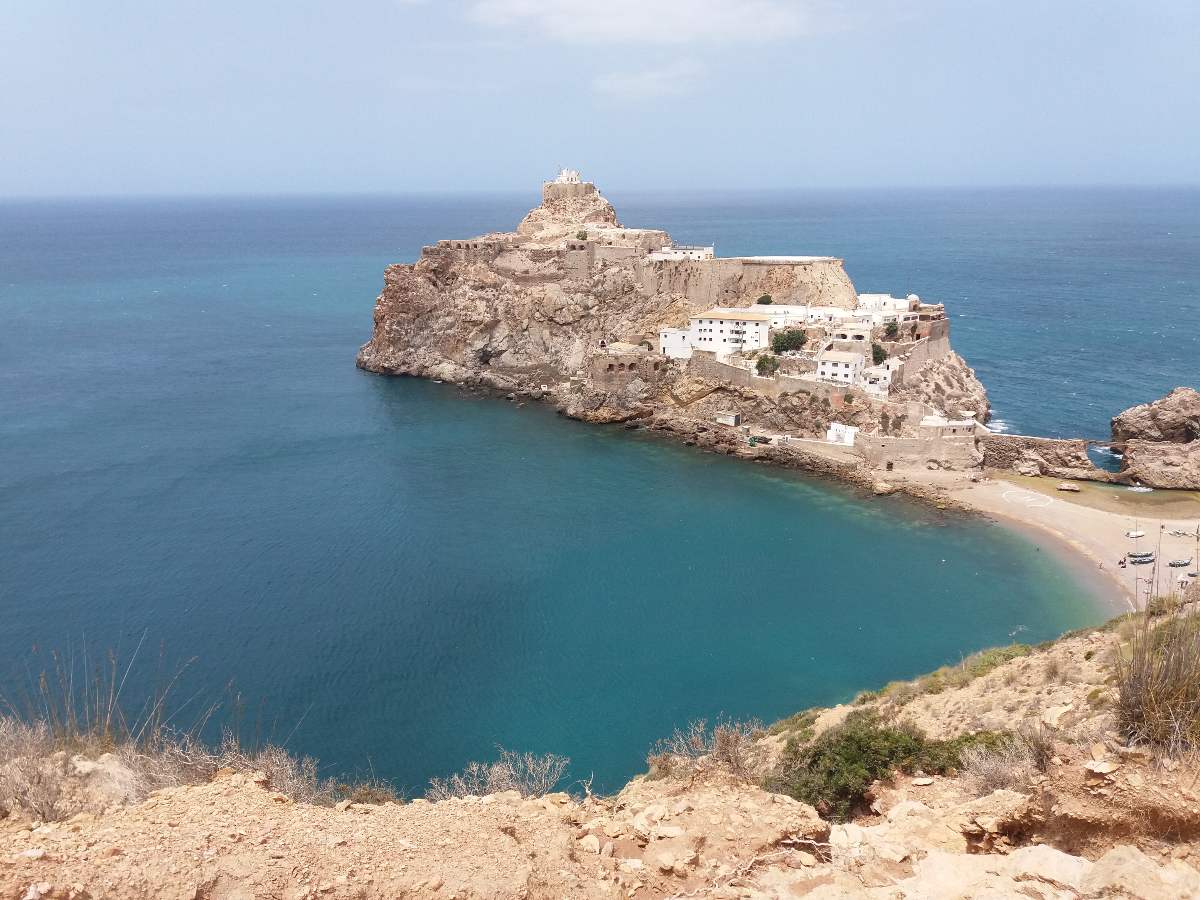Al Hoceima, also often referred to as Al-Hoceima, is in fashion. Although its popularity as a holiday destination has grown in recent years among the Moroccan population itself and among emigrants living in Europe who spend their summers in their country, more and more foreign tourists are choosing this Mediterranean city as an ideal place for their vacations in the warm season. On this page you can find information about it so that you can organize a tailor-made trip, with the help of Chic Morocco.
Al Hoceima is a city on the Mediterranean coast, belonging to the region of Tangier-Tetouan-Al Hoceima. It has a population of over 60,000 inhabitants, and enjoys a privileged geographical location: on the cape of a large natural bay and surrounded by an area of great ecological value, protected under the figure of Al Hoceima National Park.
The climate of this city is typically Mediterranean, but a few degrees warmer than its neighbors on the northern shores of this sea, i.e. the coastal destinations of Europe. Therefore, its climate is temperate in winter and hot in summer, although tempered by the sea itself, with a rainfall regime that is not high and is concentrated in the months of October to April.
Therefore, it is a year-round destination: although a swim in winter may be too cool, any walk along the coast and the surrounding area will be pleasant, especially for those traveling from northern Europe and the United States.
The small international airport (Cherif Al Idrissi) located about 17 km from the city is receiving more and more flights and passengers, mainly from European destinations such as the Netherlands and Belgium, as well as other Moroccan cities such as Casablanca. Another option to reach Al Hoceima is by ferry, in this case from Motril (Granada, Spain).
And of course, arriving by road is a very common option for all types of travelers. Beyond the local bus lines, the private vehicle is the most comfortable alternative: Al Hoceima is well connected with the rest of the Mediterranean coast through conventional roads (with Tetouan and Nador through the N16), as well as with Fez (through the N8-N2).
These are the distances you should take into account if you are planning to organize a tour in Morocco and you want Al Hoceima to be one of the stops:

The area of the province of Al Hoceima has been inhabited since ancient times, as is logical considering that it has been an area of passage and settlement of numerous civilizations, such as the Berbers, the Phoenicians, the Punics, the Romans, the Byzantines and, finally, the Arabs with their Muslim conquest.
But the history of the town of Al Hoceima does not go back centuries, but begins in 1926: the Spanish troops, seeking a counter-offensive in the Rif War, founded here a military settlement which they called Villa Sanjurjo, after a strategic landing at this point on the coast.
Al Hoceima remained under Spanish rule as part of its Protectorate until 1956, the year of the country’s independence. Until then, numerous buildings were constructed in this small town to configure its urban center, taking Andalusian architecture as a reference for this purpose.
More disputed has been (and still is) the domain of the so-called Al Hoceima Islands: ceded to the Spanish in the mid-sixteenth century by the Saadian dynasty, later desired by the British and the French and currently claimed by the Moroccans, but still under Spanish sovereignty. The Rock of Al Hoceima, off the coast, is the largest and is permanently guarded by a Spanish military garrison from Melilla.
Al Hoceima and its surroundings have always stood out for its critical spirit and its protests against the reigning power: this was the case in the context of the Rif War that ended up leading to the aforementioned landing, but it also happened even in the years following the country’s independence, when the local population felt abandoned and undervalued in the new state.
A spirit of protest that still continues to inspire different demonstrations and social movements in the 21st century. In this century, however, the most transcendental and tragic episode was the 2004 earthquake, which caused more than 600 deaths and numerous material damages.
However, Al Hoceima took advantage of the reconstruction momentum to focus on tourism with new public and private infrastructures, as can be seen today.
Undoubtedly, history and archaeology will not be the reasons that mark your trip to Al Hoceima, due to its recent foundation. But it can offer many other things of interest that justify a trip or an extended vacation here. These are some of them:

Due to its recent foundation, in Al Hoceima you will not find historical-artistic monuments as old and picturesque as in other cities. However, a walk through the center is an interesting trip to the Spanish Protectorate era, with its characteristic Andalusian-style architecture. In addition, the natural environment surrounding the city is well worth one or more excursions, if you have the time to do so.
Al Hoceima’s recent tourism boom has spawned a number of exclusive options for the traveler seeking a premium experience. From high-end hotels to sophisticated restaurants and select stores, this Mediterranean gem offers luxury at every turn. Here are the best lodging options for a luxury retreat:
Best accommodation:
4-star accommodations:
For those looking for an impeccably organized trip, Chic Morocco is your perfect ally. Specialists in luxury travel, they guarantee an experience that encompasses the best of Al Hoceima and the hidden gems of Morocco. With experience and in-depth knowledge of the terrain, your trip is in expert hands.







